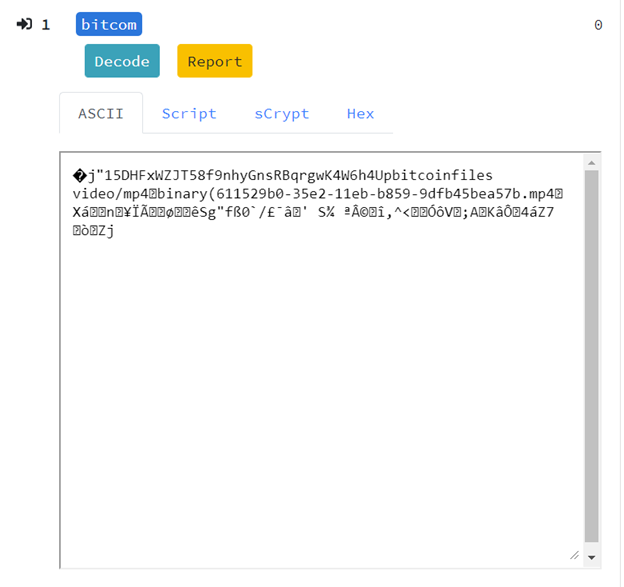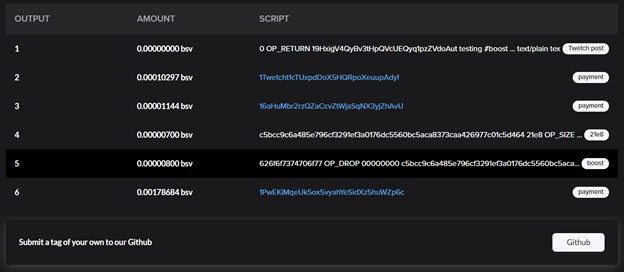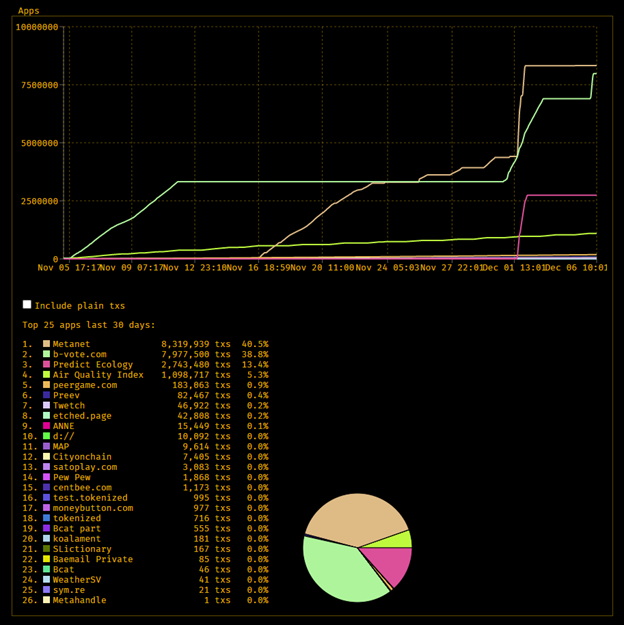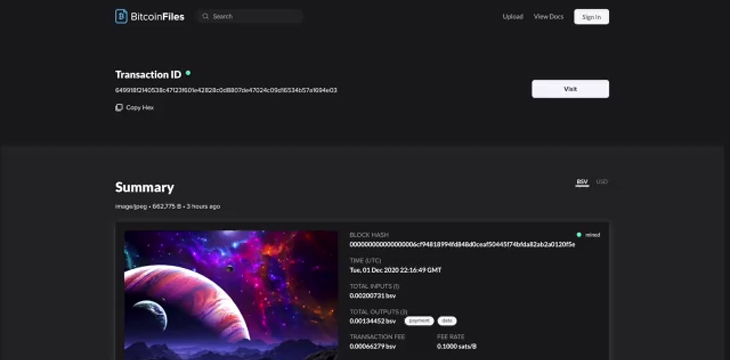|
Getting your Trinity Audio player ready...
|
The next generation of Block Explorers has arrived
Introducing BitcoinFiles Search
Available now at https://t.co/XAvPlsJ1KP pic.twitter.com/LnZaMUQw6C
— BitcoinFiles.org (@BitcoinFiles) December 4, 2020
BitcoinFiles has launched their ‘next generation’ of block explorers with the slickest user interface to date while still containing all the relevant information one would expect. The technical details are present but are displayed in a more user-friendly manner than what has been seen in the past.
This explorer is tailored to how Bitcoin SV is actually used as opposed to displaying details that ‘normies’ do not care about.

For example, standard information like block hash, timestamps and raw transaction hexes are available via user interaction but not the primary focus. Fee rates, transaction types, USD amounts and high-level statuses (ex. mined instead of how many confirmations) are front and center. The popular means of writing data on-chain via the OP_RETURN method is optimized for and viewable in plain text or hex.

Compared to popular block explorers like Blockchair or WhatsOnChain, this is the clearest presentation of data on-chain to date.
Blockchair supports 17 blockchains but has built their OP_RETURN output view for BTC whom has a paltry 40-byte cap.


WhatsOnChain does much better by providing a solid view with some tagging but requires the user to click additional times (the ‘Decode’ button and ‘Script’, ‘Hex’ tabs) to get the full picture. BitcoinFiles takes tagging to the next level by implementing a base of tags to start like Twetch, payments (P2PKH), data (OP_RETURN outputs), 21e8, Boost and Run while allowing anyone to submit a tag of their own.

Imagine marketing on-chain. All Bitcoin businesses have an incentive to tag their transactions as it is free marketing for their application. Simply submit a pull request here to get started.
If a service would like more custom representation (for example logos) they can work with BitcoinFiles to get that implemented. Twetch already links to the new explorer by default and due to this tagging feature other applications have a strong incentive to do so as well.
If you are a wallet or bitcoin service provider please reach out to us! We are happy to integrate the greatest block explorer ever made with your service
— BitcoinFiles.org (@BitcoinFiles) December 4, 2020
Tagging is based on the output script type, not just the data in the OP_RETURN—meaning this method can scale to give a more comprehensive view of applications’ true transaction counts on the ledger. Popular site BitcoinBlocks.live is often used to see what transactions are being broadcast but hardly gives an accurate picture.

For example, what is ‘Metanet’? We know it is a protocol but displaying 8 million transactions by a protocol is hardly useful. Knowing which application implements what protocol would be much more informational. With more accurate tagging on various transaction types we can understand which businesses are truly using the ledger for what purposes.
Instead of relying on companies to be truthful on claims sourced by themselves on revenue, usage, and volume they could point the curious to their on-chain tags. Such a feature has interesting implications on speculation, potential investments, and knowledge of current happenings in the space.
By providing a more comprehensive and relevant picture of transactions on-chain BitcoinFiles augments the transparency aspects of the ledger. Users can inspect popular transactions more easily and businesses can openly contribute in a way that communicates to their customers pertinent information.

What is next for BitcoinFiles search? It appears they plan to implement a means to do plain-text searches for immutable data instead of only by hashes. This feature is much needed today given a certain popular search engine’s manipulation of search results…
Check out the new BitcoinFiles block explorer here.

 12-24-2025
12-24-2025 




